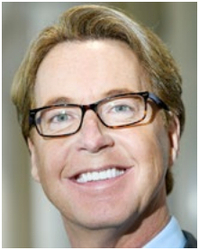Having returned some time ago from their summer breaks, many lenders and investors are asking “how resilient are the private financial markets” and “where are we in the investment cycle”?
Attractive investment opportunities clearly remain, but as finance professionals assess the impact of the highest inflation rates seen since the 1970s (resulting in accelerating costs of borrowing and plunging public equity markets), the fast changing economic and monetary landscape is causing many to pause and take stock.

Paul Durban
In this challenging environment, what trends do we expect to see and where do the opportunities lie?
Direct lending
With little clarity on where the market will settle, as pricing remains fluid, borrowers are increasingly focusing on direct lending options, even for mega credits that would historically have been the preserve of traditional banks (local and international), rather than private funds.
There are various reasons for this. The growth in private debt dry powder during a bumper 2021 means that direct lenders now have sizeable war chests to fund larger deals, either bilaterally or with other like-minded players. Rising interest rates also benefit those lenders which deploy capital using floating rate instruments (provided the base rate exceeds the interest rate floor in the borrowing company). Pricing and covenant differences between direct lending and bank-led, syndicated loans are now also less noticeable. Those banks still in the market are frequently seen pushing for higher pricing to compensate for the higher cost of capital, alongside more stringent covenants to counter perceived increased risk. Some direct lenders – still keeping documentation tight – have sensed an opportunity, willing to issue debt on less stringent covenant terms for selected credits and relationship clients.
Asset-based borrowing
Leveraging the assets they hold on their balance sheets in order to raise capital, may well constitute a good option for borrowers to achieve valuable liquidity while abnormal market volatility endures. Although valuing assets inevitably becomes more challenging in times of economic uncertainty, private asset values have stayed remarkably robust in the main. Businesses that can go out and find private debt capital in a market that rewards strong balance sheets and growth should be in pole position. Whether it’s a supplier financing facility at one end or sponsors looking to increase private equity fund firepower, through structures such as NAV facilities (which enable managers to borrow against the NAV of the assets held in their funds) at the other, borrowers may find it easier to structure and get deals away based on the value of assets rather than against future cash flows, which are far more uncertain at this time (e.g. what discount rate is applicable as inflationary expectations continue to rise?).

Michael Crosby
While the capital markets face their challenges, we are seeing no shortage of demand (or capacity) among direct lenders to finance deals in industries which show resilient business characteristics, strong cash flow conversion and limited capex requirements that insulate them somewhat from steep inflationary pressures. Below, we present two sectors that are presenting attractive deployment opportunities:
Healthcare: tracking the surge in fundraising and the fact that demand remains resilient and less impacted by economic swings (traditionally, the sector has been a strong performer in uncertain periods) healthcare – and noticeably natural healthcare – remains a highly sought-after investment area. With new products regularly coming to market, lenders are also tapping into consumer trends of healthier eating and sustainable lifestyles.
Energy: the European Parliament’s decision in July to approve draft EU rules labelling natural gas and nuclear power plants as “climate-friendly” investments, has also sparked further interest in fuel production, power generation and energy infrastructure projects. On the flip side, this is offset by the increased market focus on renewables (the move away from greenhouse-gas-emitting projects) and ESG and sustainability-linked loans.
In addition to these two sectors, large deals in sectors such as music, sports and entertainment, telecommunications, business services and logistics have also progressed, with market consolidation continuing to drive activity. And, more generally, in a time of temporary market dislocation, we are seeing increased focus on that broad category “special situations”, as out-of-favour companies that may have the potential to deliver significant capital growth go through (or risk going through), restructuring processes.
Consequently, we take the view that broader market volatility will continue to create opportunities…
ESG and sustainable finance
ESG and sustainability are heavily influencing borrowers and lenders alike, as the search for common methodologies, reporting standards and KPIs in deal documentation gathers momentum. No longer just the concern of the equity owners of a business, direct lenders, in particular, are looking to fund an increasing volume of sustainability-linked loans (driven by a genuine commitment to more ethical and responsible investing but with some associated recalibration of expectations and strategies). In contrast, corporates that have not yet integrated ESG and sustainability into their investment decisions may increasingly find it difficult to secure financing on attractive terms.
Regulatory pressure also has a big part to play with the EU’s Sustainable Finance Disclosure Regulation (SFDR) coming into force last year. Among other things, this new regulation requires managers to disclose the degree to which sustainability is integrated into their investment strategy and for lenders to provide sustainability related information with respect to financial instruments. In addition, direct lending funds wanting to become Article 8 funds will also need to find an ESG pretext for most of their deals to comply with SFDR and, ultimately, attract investment into their fund. The pace is frantic in this area of the market with Bloomberg predicting the ESG debt market to hit approximately US$11 trillion by 2025 based on recent growth.
Paul Durban and Michael Crosby are partners at MJ Hudson.

